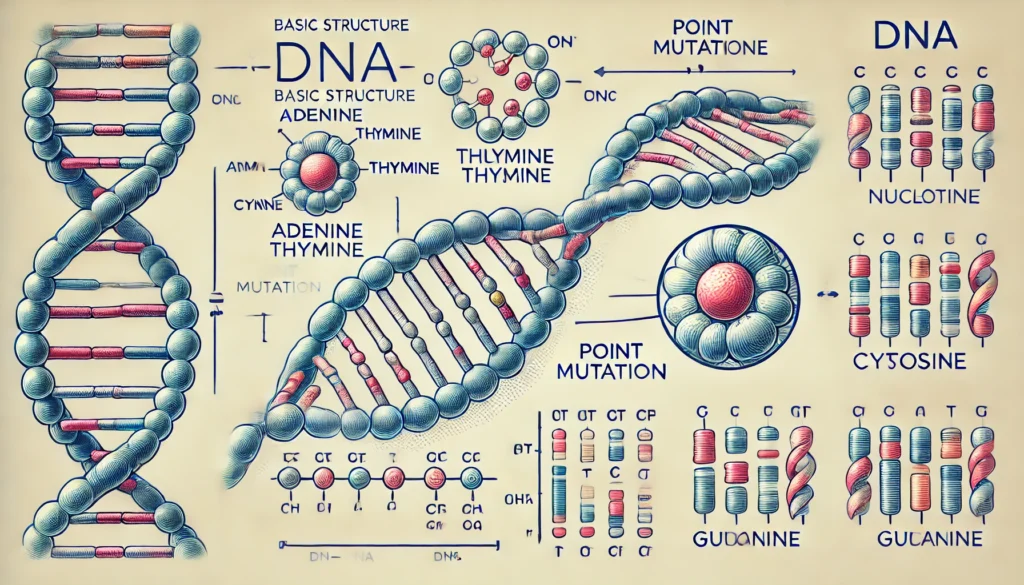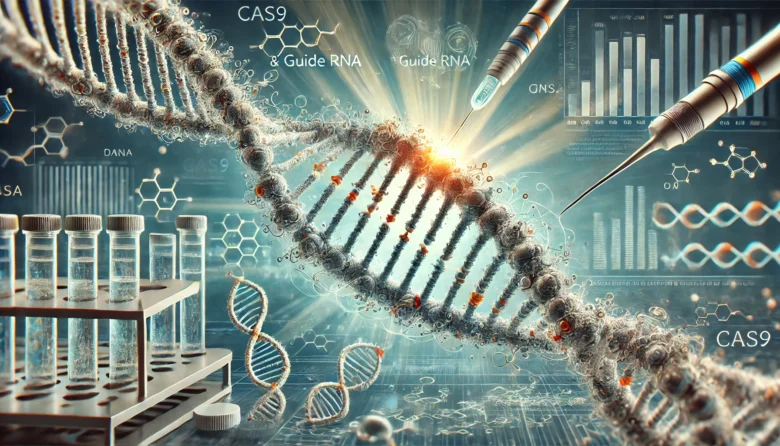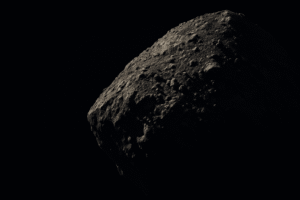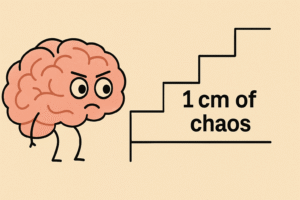Ever wonder how life evolved from single-celled organisms to the vast biodiversity we see today? The answer lies in genetic mutation and evolution. These two processes are fundamental to the development of all life forms on Earth, shaping everything from the tiniest bacteria to the most complex creatures like humans. In this blog, we’ll dive into the fascinating world of genetic mutation and evolution, exploring how these natural processes influence everything around us.
The Basics: What is Genetic Mutation?
At the core of evolution is genetic mutation. But what exactly is a mutation? In simple terms, a genetic mutation is a change in the DNA (Deoxyribonucleic Acid) sequence of an organism. DNA acts as a blueprint for building and maintaining all living things. Sometimes, during cell division or due to external factors like radiation, small mistakes can occur in this blueprint. These mistakes are called mutations.
There are different types of genetic mutations, including:
Point Mutations: A single change in the DNA sequence.
Insertions and Deletions: Adding or removing segments of DNA.
Duplications: When a segment of DNA is copied multiple times.
These mutations can be neutral, harmful, or beneficial. Most mutations are neutral, meaning they don’t have any noticeable effect. But every once in a while, a mutation will give an organism a slight advantage or disadvantage in its environment. This is where evolution comes into play.

Evolution: Nature’s Selection Process
Evolution is the process by which species change over time through the gradual accumulation of genetic mutations. The key mechanism behind evolution is natural selection, which was first proposed by Charles Darwin in the 19th century.
Natural selection works like this: organisms with advantageous mutations are more likely to survive and reproduce, passing their beneficial traits to the next generation. Over time, these advantageous traits become more common in the population. On the other hand, harmful mutations often get weeded out because they reduce an organism’s chances of survival.
For example, let’s look at the famous case of the peppered moth in 19th-century England. Before the Industrial Revolution, most peppered moths were light-coloured, which helped them blend into the lichen-covered trees. However, pollution caused by factories darkened the tree bark. As a result, darker-coloured moths, which were once rare, had a survival advantage since they could now better camouflage from predators. Over time, the population of dark-coloured moths increased—a clear example of natural selection in action!
Types of Evolution: Microevolution vs. Macroevolution
When we talk about evolution, we can break it down into two main categories:
Microevolution: Small changes within a species over time. Think of it like the slow shifting of traits in a population, such as bacteria becoming resistant to antibiotics.
Macroevolution: Large-scale changes that occur over much longer periods. This is how new species form, such as when the ancestors of modern humans split from our closest primate relatives millions of years ago.
Microevolution can often be observed in real time. Take the flu virus, for example. It mutates rapidly, which is why we need a new flu vaccine every year. Each mutation brings small changes, allowing the virus to evade our immune system’s defences.
On the other hand, macroevolution happens on a grander scale and is typically observed through fossil records, such as the transition of ancient fish into land-dwelling tetrapods (four-legged animals) over millions of years.
Mutations: The Good, the Bad, and the Neutral
While many people associate mutations with negative outcomes like genetic disorders, it’s important to recognize that mutations are also the source of genetic diversity and innovation. Without mutations, evolution wouldn’t be possible, and life as we know it wouldn’t exist.
Beneficial Mutations
Beneficial mutations are rare, but when they do occur, they can lead to significant evolutionary advancements. Take the example of lactase persistence in humans. Most mammals become unable to digest lactose, the sugar present in milk after they are weaned. However, due to a genetic mutation, some human populations can digest milk into adulthood. This mutation likely provided a nutritional advantage in societies that practised dairy farming, and over generations, lactase persistence became more common in those populations.
Harmful Mutations
On the flip side, harmful mutations can lead to genetic disorders or decrease an organism’s chance of survival. For instance, cystic fibrosis, a disease that affects the lungs and digestive system, is caused by a harmful mutation in the CFTR (Cystic Fibrosis Transmembrane Conductance Regulator) gene.
Neutral Mutations
Most mutations fall into this category. They don’t affect an organism’s ability to survive or reproduce. However, neutral mutations can accumulate over time and, in rare cases, become advantageous or harmful if the environment changes.
Evolutionary Case Studies: Real-Life Examples
Sickle Cell Anemia and Malaria Resistance
One of the most famous examples of a genetic mutation providing a survival advantage is the relationship between sickle cell anaemia and malaria resistance. In regions of Africa where malaria is common, people with one copy of the sickle cell mutation (called heterozygotes) have some protection against malaria, a disease caused by parasites transmitted by mosquitoes. However, having two copies of the mutation causes sickle cell anaemia, a painful and often life-threatening condition.
This genetic trade-off demonstrates how a mutation that may be harmful in one context (sickle cell anaemia) can provide a life-saving advantage in another (malaria resistance).
Darwin’s Finches: Beak Evolution
Darwin’s finches, a group of bird species found on the Galápagos Islands, are another classic example of evolution through natural selection. These finches have different beak shapes, which evolved to help them eat various types of food. Some finches developed long, narrow beaks for probing into cactus flowers, while others evolved strong, thick beaks for cracking seeds. Over time, natural selection shaped the beaks to suit each finch’s food source.
Genetic Mutation in the Modern World: CRISPR and Gene Editing
As scientists learn more about genetic mutation, new technologies are emerging that allow us to directly edit DNA. One of the most exciting advancements in recent years is CRISPR (Clustered Regularly Interspaced Short Palindromic Repeats), a gene-editing tool that lets researchers “cut and paste” DNA with unprecedented precision.
CRISPR holds the potential to revolutionize medicine by treating genetic disorders, improving crops, and even eliminating diseases like malaria by editing the genes of mosquitoes. However, with great power comes great responsibility, and scientists are still grappling with the ethical implications of editing the human genome.
Conclusion
The science of genetic mutation and evolution is a testament to the power of change and adaptation in the natural world. From microscopic bacteria to complex human societies, life on Earth is constantly evolving, shaped by the tiny changes in our DNA. While mutations can sometimes bring challenges, they are also the driving force behind life’s incredible diversity.
As we continue to explore the mysteries of genetics, one thing is clear: the future holds endless possibilities, both in understanding our evolutionary past and in shaping the world of tomorrow.
Author’s Note
Thank you for taking the time to explore the wonders of genetic mutation and evolution with me. This journey into the heart of life’s complexity highlights the incredible adaptability of all living beings. Remember, science is not just for experts—everyone can enjoy learning about the natural world!
G.C., Ecosociosphere contributor.
References and Further Reading
- Understanding the Occurrence of Genetic Mutation. https://scienceofbiogenetics.com/articles/when-and-how-does-genetic-mutation-occur
- Evolution | Evolution and Life. https://www.earthfacts.com/evolution-and-life/evolution/
- Wharton, D. A. (2002). ‘It’s life, Jim, but not as we know it!’. Cambridge University Press EBooks. https://doi.org/10.1017/cbo9780511541568.008
- Evolution – Revision Notes in GCSE Biology. https://getrevising.co.uk/revision-notes/evolution_13
- Allelic heterogeneity – Siteman Cancer Center. https://siteman.wustl.edu/glossary/cdr0000460125/
- These Cows Have Extra Legs – Animals Around The Globe. https://www.animalsaroundtheglobe.com/web-stories/https-www-animalsaroundtheglobe-com-these-cows-have-extra-legs/




